An excessively large Document Object Model (DOM) can significantly impact website performance. This article explains the importance of DOM size optimization and suggests strategies to resolve issues related to large DOMs.
An example of excessive DOM size
As an example, consider the following HTML structure for a simple card component:
<div class="card">
├─ <div class="content">
│ ├─ <div class="wrapper">
│ │ ├─ <div class="container">
│ │ │ ├─ <div class="text-box">
│ │ │ │ ├─ <p class="paragraph">
│ │ │ │ │ ├─ <span class="highlight">
│ │ │ │ │ │ ├─ <strong>
│ │ │ │ │ │ │ ├─ <em>
│ │ │ │ │ │ │ │ ├─ <u>
│ │ │ │ │ │ │ │ │ ├─ "Hello"
This structure contains multiple nested elements to display some simple text. While this example performs perfectly well in isolation, it can become problematic when repeated across multiple card components on a page.
The impact of DOM size on website performance
The DOM represents the structure and content of a web page. An excessively large DOM can lead to:
- Slower initial page loads: The browser must download, parse, and render more HTML elements, leading to increased load times.
- Delayed user interactions: Complex DOM structures require more processing time, causing delays in user interactions such as scrolling and clicking.
- Increased memory usage: Large DOMs consume more memory and can be especially problematic on mobile devices with limited resources.
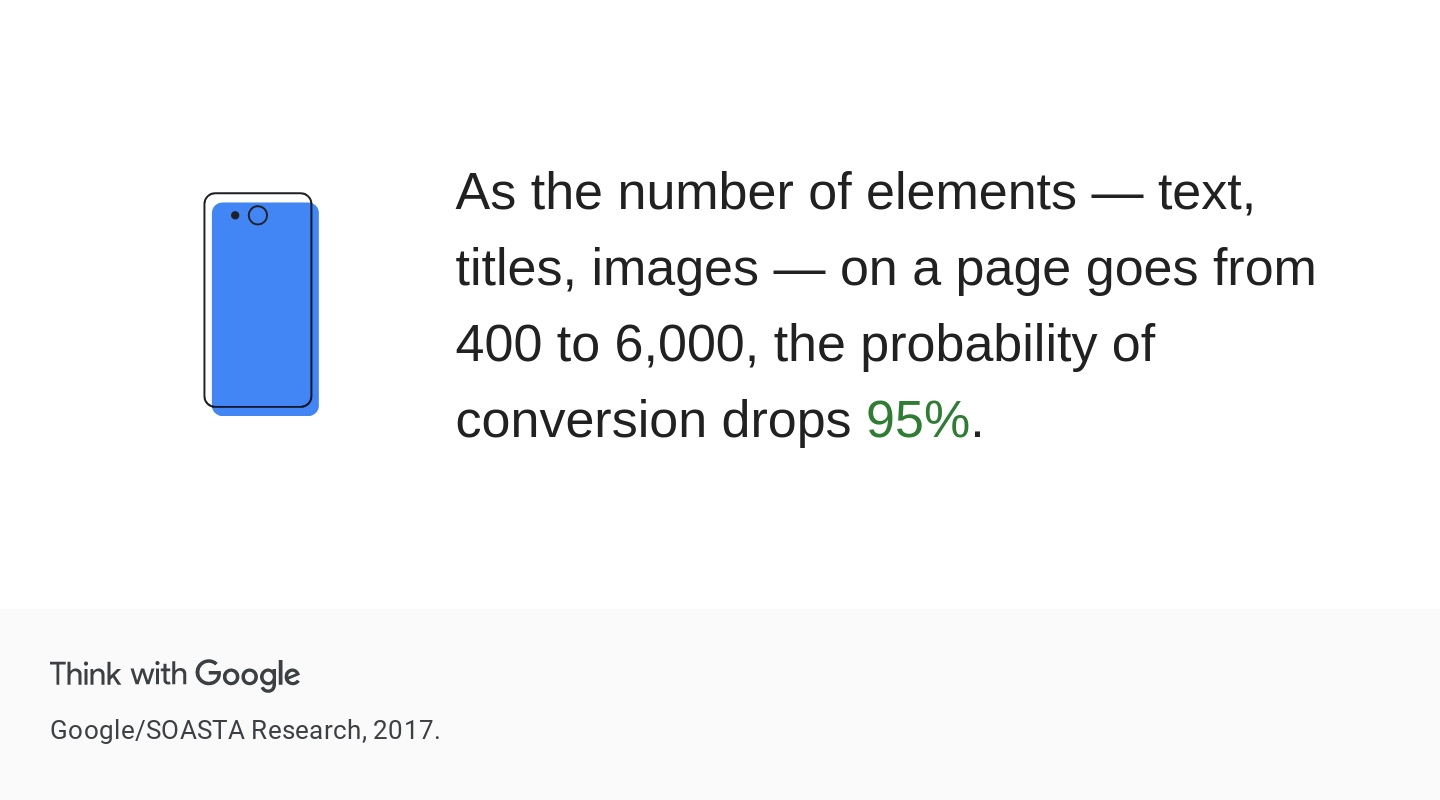
The Avoid an excessive DOM size Lighthouse audit
The Avoid an excessive DOM size audit in Lighthouse warns you about large DOMs:
- Lighthouse issues a warning if the body element contains over approximately 800 nodes.
- Lighthouse reports an error if the body element contains over approximately 1,400 nodes.
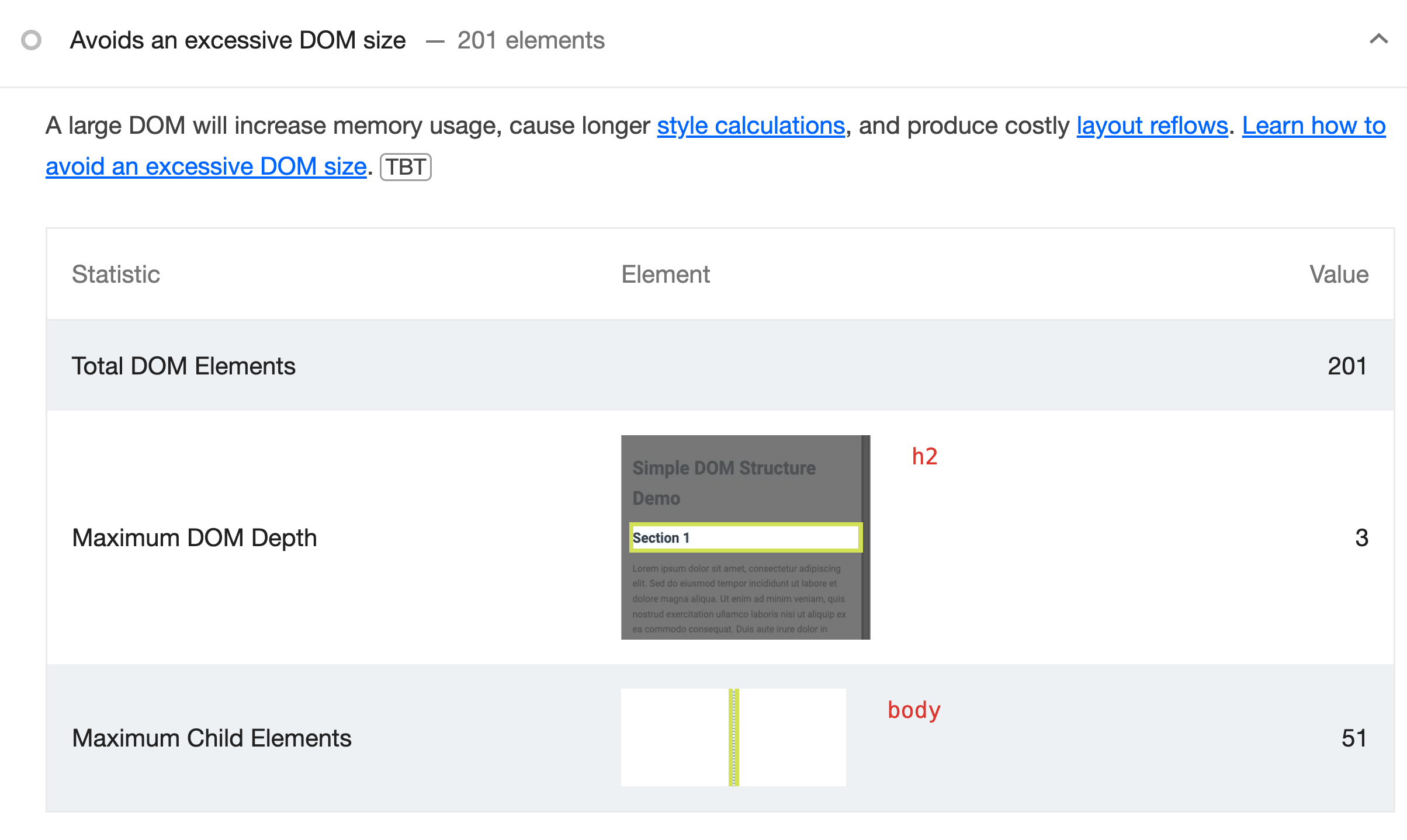
DOM size and Core Web Vitals
The size of your DOM can impact your Core Web Vitals metrics, which are important for search engine optimization.
Largest Contentful Paint (LCP)
Largest Contentful Paint measures how quickly the main content of a page becomes visible. A large DOM requires more download time and more processing time before the browser can render content, potentially delaying LCP.
Interaction to Next Paint (INP)
Interaction to Next Paint assesses page responsiveness. With a large DOM, the browser must perform more extensive style recalculations and layout work when users interact with the page, leading to delays in visual updates.
Measuring DOM size and its impact
You can use a variety of techniques to understand how DOM size affects your website's performance:
Chrome tab memory usage
Chrome has a built-in task manager. You can use it to monitor the memory usage of individual tabs, including the memory consumed by the DOM.
The following screenshot shows the memory footprint for tabs open in Chrome. The tab with the most high memory footprint uses no JavaScript, yet still consumes a large amount of memory due to its large DOM:
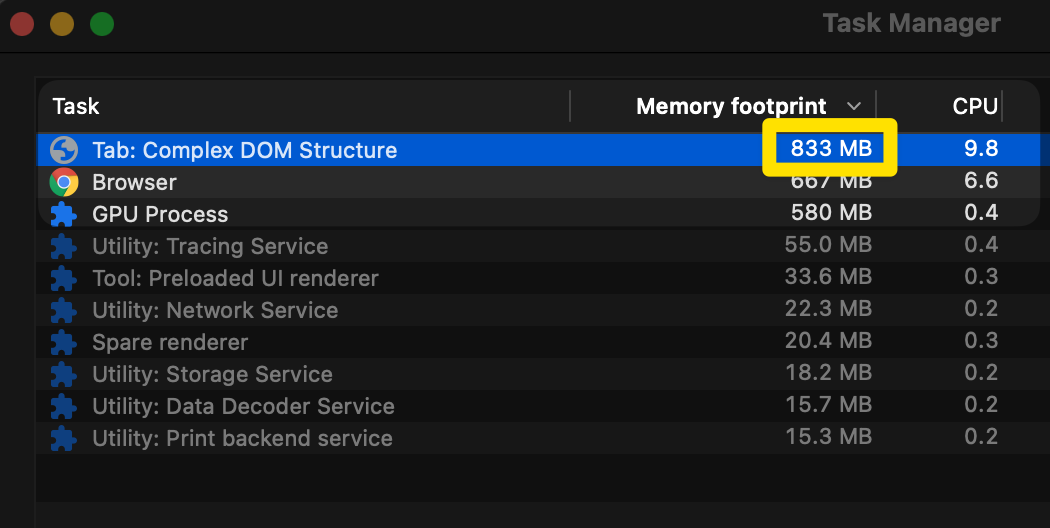
DevTools heap snapshot
You can take a heap snapshot in Chrome DevTools to analyze the memory usage of your website's DOM. The following table shows a heap snapshot of a website with a large DOM:
| Constructor | Retained Size (MB) |
|---|---|
| Window | 71.76 |
| Text ×537316 | 40.99 |
<div> ×139301 | 13.83 |
<img> ×19900 | 4.55 |
<figure> ×19900 | 1.97 |
Performance profile in DevTools
You can use the Performance panel in Chrome DevTools to profile page load and interactions. The following screenshot shows a performance profile during a page load of a website with a large DOM:
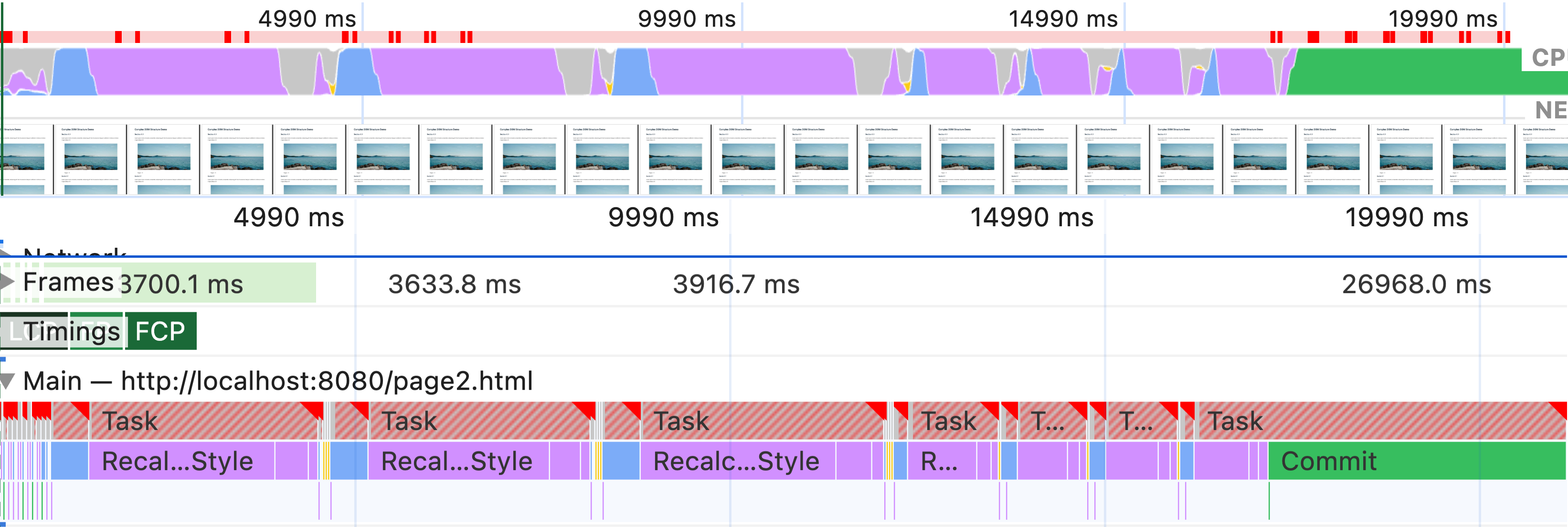
The following screenshot shows a DevTools performance profile during scrolling, highlighting the impact of a large DOM on user interactions. The browser couldn't display the contents of the page fast enough to match the user's scrolling speed:
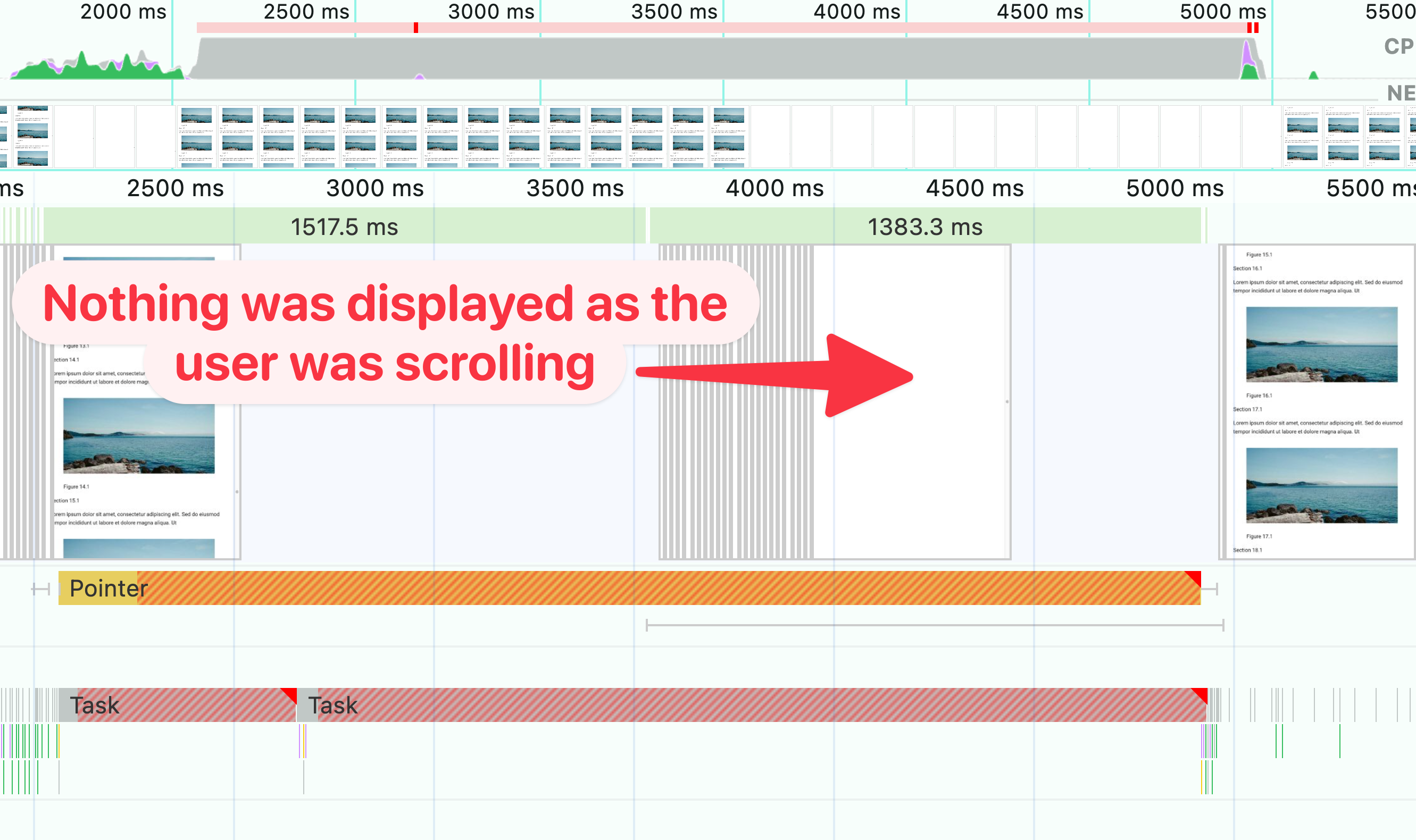
Rapid scroll test
While a bit less scientific, you can also perform a rapid scroll test to see how your website behaves when users scroll quickly. Scroll the page very quickly, or even drag the scrollbar handle (within the scroll bar) to quickly scan through the page. If the page lags, or if content doesn't render quickly enough, this could be the sign of a large DOM.
Lighthouse performance audit
Lighthouse warns you about excessive DOM size in its performance audit. The following screenshot shows the Lighthouse performance audit failing due to an excessive DOM size:
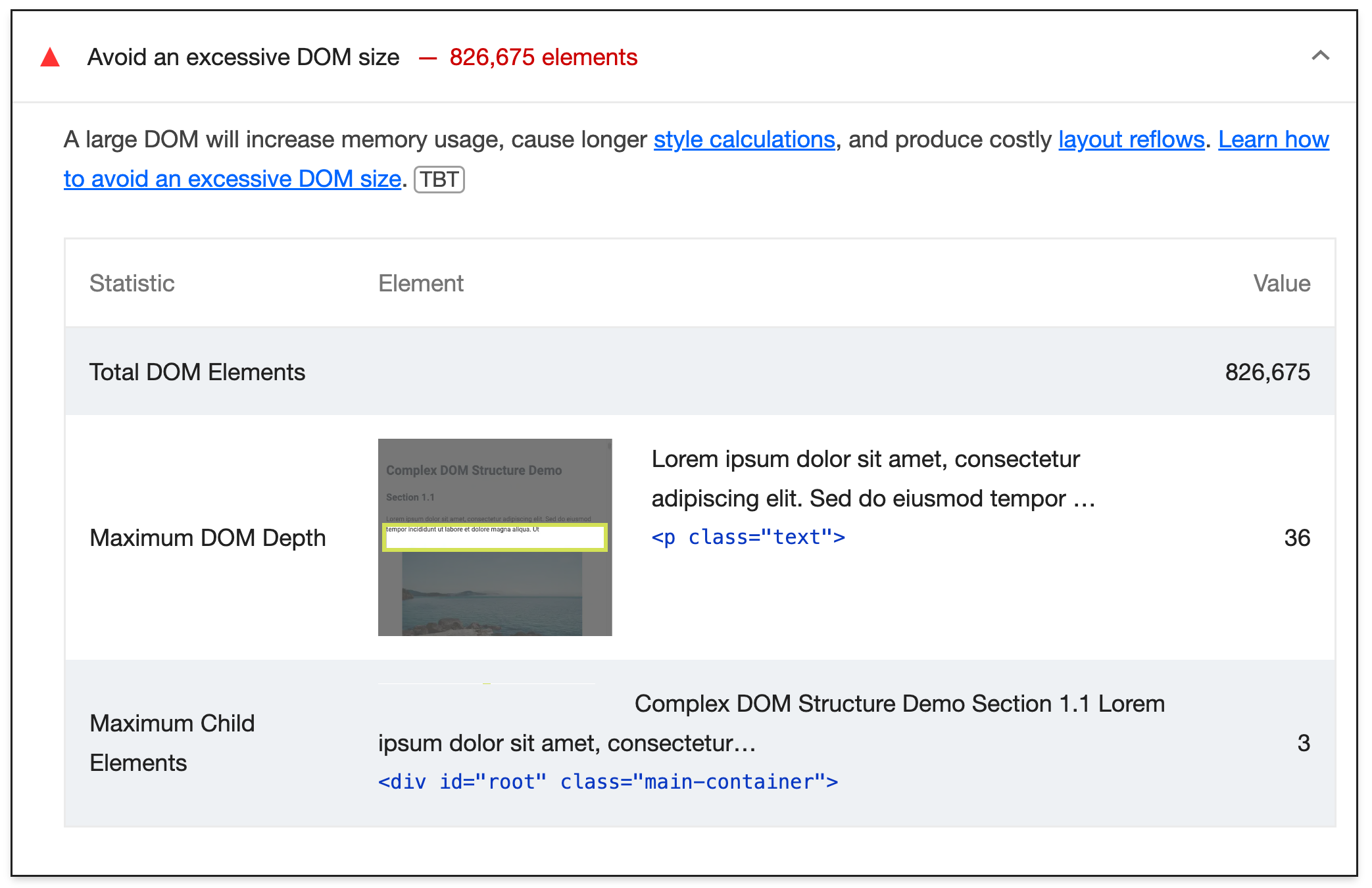
DebugBear website speed test
The DebugBear website speed test provides a detailed breakdown of your website's performance, including DOM size - through Lighthouse reports.
How to fix an excessive DOM size
Depending on your website architecture, you may need to adopt different strategies to reduce DOM size. Consider the following:
1. Flatten HTML structure
Simplify nested structures to reduce DOM depth:
Note that content management systems (CMS) and templating engines can sometimes generate unnecessary nesting. Review your templates to ensure they produce efficient HTML.
2. Use CSS Grid and Flexbox
Modern CSS layout techniques can often replace complex nested structures, reducing the need for multiple container elements. As you transition to using more modern layout techniques, you can then identify and remove unnecessary wrapper elements and repeated structures.
3. Audit third-party scripts
External widgets, tracking scripts, adverts, and more, can significantly increase DOM size. You should regularly review and remove unnecessary third-party scripts from your website.
The relationship between CSS complexity and DOM size
As DOM size increases, the cost of CSS operations also grows:
- Style recalculations: As the number of elements increases, the browser must perform more calculations to determine the final styles for each element.
- Layout operations: Changes to the DOM can trigger layout recalculations, which become more expensive with larger DOMs.
- Selector matching: Complex CSS selectors take longer to match against a larger number of elements.
To mitigate these issues:
- Simplify your CSS selectors
- Use CSS methodologies that promote flat structures, e.g. BEM
- Use CSS containment to isolate parts of the page
Additional considerations
- Some JavaScript frameworks may contribute to excessive DOM size. When choosing a framework, consider its impact on DOM complexity.
- The
content-visibilityCSS property can help reduce rendering time for off-screen content in large DOMs.
Measuring the Impact of Optimizations
After implementing these changes, you can use DebugBear to track improvements in DOM size and overall performance.
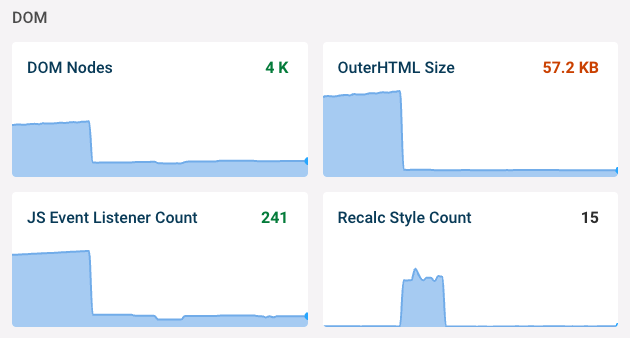
Conclusion
Optimizing DOM size is part of maintaining a fast and responsive website. By implementing these strategies, you can improve your site's performance, enhance Core Web Vitals scores, and provide a better user experience.
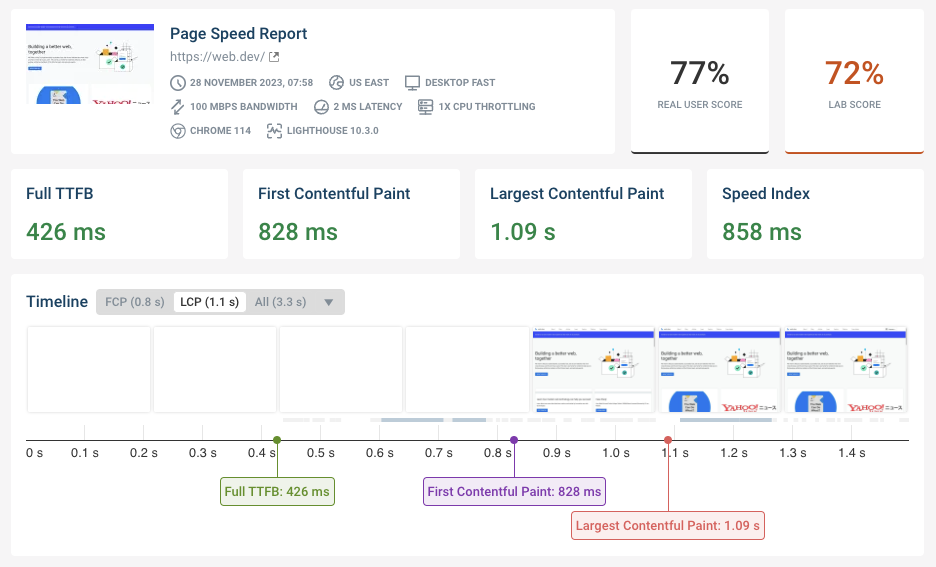
Run A Free Page Speed Test
Test Your Website:
- No Login Required
- Automated Recommendations
- Google SEO Assessment